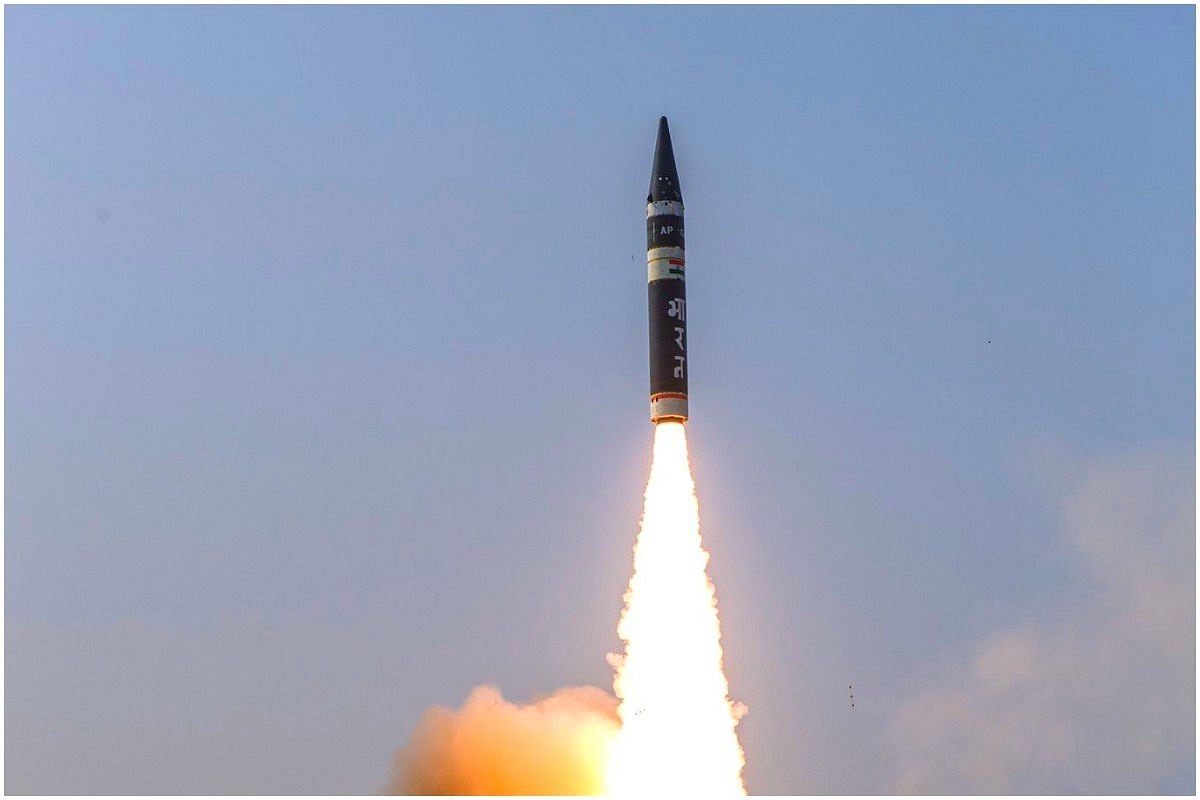News Brief
India Test Agni Prime Nuclear-Capable Ballistic Missile
- India has conducted the second test of its Agni Prime nuclear-capable ballistic missile.

Agni Prime
The Defence Research and Development Organisation test-fired the Agni Prime nuclear-capable ballistic missile earlier today.
The missile, which has a range of between 1,000-2,000 kilometres, has been developed specifically to strike targets in Pakistan. The stated range of the missile will not allow it to reach all major cities in China, most of which are located in the country's eastern coastal belt.
Reports suggest that the missile will replace Prithvi, Agni 1 and Agni 2 nuclear missiles developed two decades ago. Agni Prime is believed to be more accurate and easy to use than these missiles, which have technology that is considered largely outdated.
However, some reports, including this in ThePrint, which cites government sources, say that the missile is not replacing any of the existing missiles.
Many experts believe that the high accuracy and manoeuvrability of the missile could be used to target aircraft carriers.
"From whatever I have read, I think it's a maneuvering warhead and it can maneuver after reentry. So it can hit targets which are moving, for example ships. You might have heard of Chinese capability to hit aircraft carriers at long distances. [inaudible] systems give you that kind of capability," Dr Avinash Chander, former director-general of DRDO, told StratNews Global Editor-in-Chief Nitin Gokhale in a recent interview.
The test conducted earlier today was the second test launch of the Agni Prime missile, which was tested for the first time in June this year.
Agni Prime weigh 50 per cent less than Agni-III and is the lightest and smallest of the Agni series of missiles, the report in ThePrint says.
The missile, the DRDO says, is a two-stage and solid-fuel weapon system.
It is made up of composite material, which offers various advantages over conventional materials. Composites are lightweight, have better strength and offer greater design and production flexibility.
The new missile uses some technologies that the DRDO has developed for the long-range Agni-IV and Agni-V nuclear-capable ballistic missiles.
Agni Prime comes in a canisterised configuration. Canisterisation significantly enhances the mobility of a missile. In canisterised configuration, a missile requires very short preparation time and can be launched at short notice. Canisterisation also increases the reliability of a missile and its shelf-life.
In this configuration, a missile mated with a nuclear warhead is sealed in a canister, which is placed atop a road-mobile launcher.
In the past, India has tested its Agni-5 intercontinental ballistic missile in canisterised configuration. The missile has a range of over 5,500 km.
A canisterised missile can be fired directly from the canister or cylindrical container containing the missile by elevating it.
Support Swarajya's 50 Ground Reports Project & Sponsor A Story
Every general election Swarajya does a 50 ground reports project.
Aimed only at serious readers and those who appreciate the nuances of political undercurrents, the project provides a sense of India's electoral landscape. As you know, these reports are produced after considerable investment of travel, time and effort on the ground.
This time too we've kicked off the project in style and have covered over 30 constituencies already. If you're someone who appreciates such work and have enjoyed our coverage please consider sponsoring a ground report for just Rs 2999 to Rs 19,999 - it goes a long way in helping us produce more quality reportage.
You can also back this project by becoming a subscriber for as little as Rs 999 - so do click on this links and choose a plan that suits you and back us.
Click below to contribute.
Latest